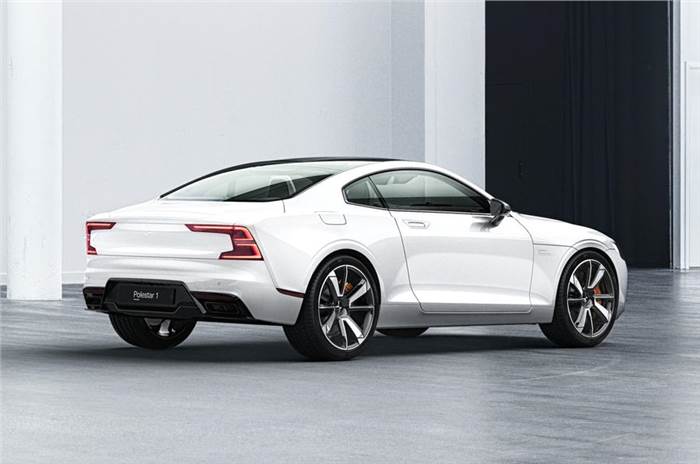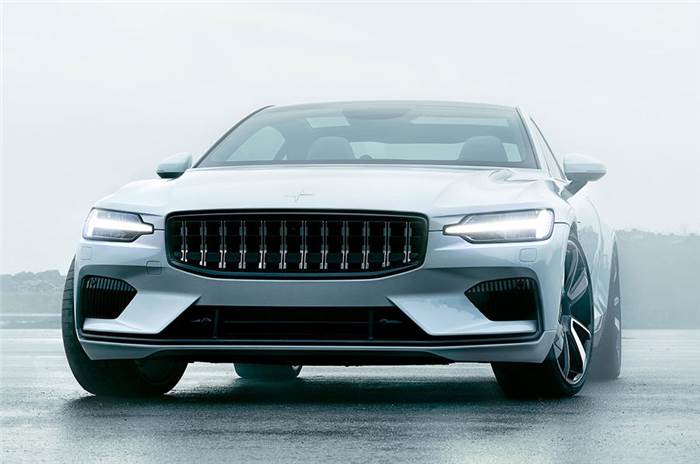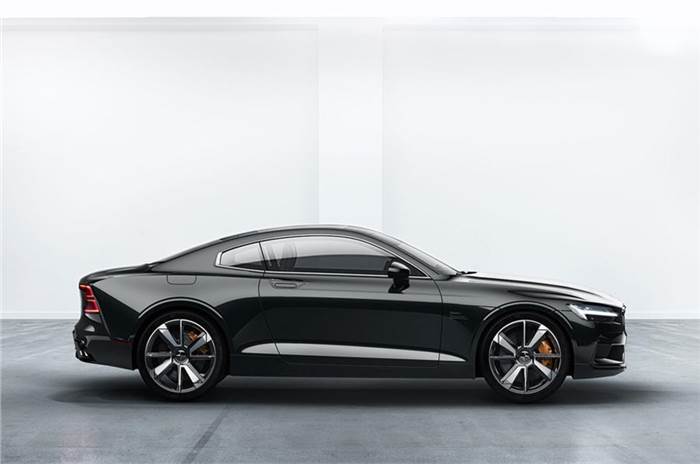Polestar has announced that their hybrid performance sedan, the 1, will have a production run of 500 units per year once it goes into production in mid-2019. The limited number of models is due to the complex construction process required to create its carbon-fibre bodywork.
The brand’s first model since it became a standalone brand from Volvo will first be available in the US, Chinese, German, Swedish, Norwegian and Dutch markets as the firm has said that these ones have the highest demand for its product. There is no official word on when the model will arrive in India.
The 600hp, four-seat GT coupe will be the brand’s flagship model, acting as a halo product and will only be on sale online through subscription.
Company boss Thomas Ingenlath labelled the 1 as “an electric car with support from an internal-combustion engine”. The 1 will be the only hybrid in Polestar’s line-up with all future models, starting with a Tesla Model 3 competitor, possessing an all-electric set-up.
Two electric motors, with the aid of an integrated starter/generator, power the rear wheels, and produce a combined 218hp. A 150km range has been claimed in pure-electric mode. Volvo’s 382hp, 2.0-litre four-cylinder petrol engine drives the front wheels. When combined the total system output is 600hp and 999Nm of torque.
As we had mentioned at its unveiling, the Polestar 1’s styling is derivative of the Volvo Concept Coupé unveiled in 2012. The main differences between the two, at least at the front, are the Polestar logo replacing the Volvo one and the grille. "Polestar will not have a front grille, it will have the grid," explained Ingenlath. The grid at front houses sensors.
While not a proper Volvo, the Polestar 1 borrows plenty of technology from its parent company and will serve as a "technology spearhead". It is based on Volvo’s Scalable Platform Architecture, although Polestar claims about 50 percent of the structure is new. Measuring 4.5 metres in length, it is nearly 0.5m shorter than the S90, and is overall smaller than the luxury sedan. Weight has reduced by about 230kg, torsional rigidity has increased by 45 percent and the centre of gravity is lower than the S90 thanks to extensive use of carbon-firbe.
With production capped at 500 units a year, only left-hand-drive models are expected to be produced at a bespoke Polestar production facility currently being built in Chengdu, China. Volvo has invested £570 million (about Rs 4,865 crore) into the new performance division.
Forgoing a traditional dealer network in favour of online sales, Polestar will only retail its models online. Cars will be offered on an all-inclusive subscription basis, with a two or three-year fixed term, set monthly payments and no deposit. The yet-to-disclosed fee will include pick-up, delivery and servicing at selected Volvo workshops.
The charge also includes a number of car rental days, allowing owners of the 1 to use larger Volvos. Polestar will also offer a range of concierge services, including hiring larger cars and items such as roof boxes and booking a valet cleaning, through an app. Once the term is complete, the firm will take the car back, refurbish it and sell it in the used market.
Polestar cars will also feature ‘Phone-as-Key’ technology, which will allow app users to operate their car without a key or give a ‘virtual’ key to other users when needed.
Polestar isn’t entirely moving away from traditional showrooms and will open a small number of Polestar Spaces in various locations, but none will be connected to current Volvo showrooms. The first Polestar Spaces are due to open in early 2019.
Also see:
Polestar 1 coupe image gallery
Polestar sedan and SUV in the works



















Comments
Member Login
Personal Details
No comments yet. Be the first to comment.